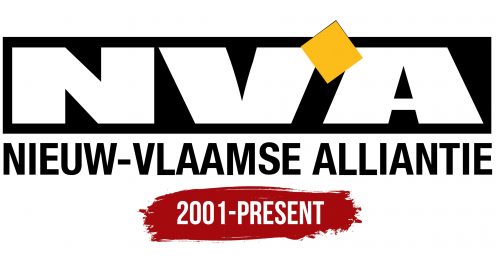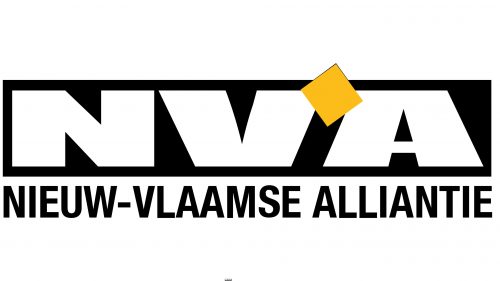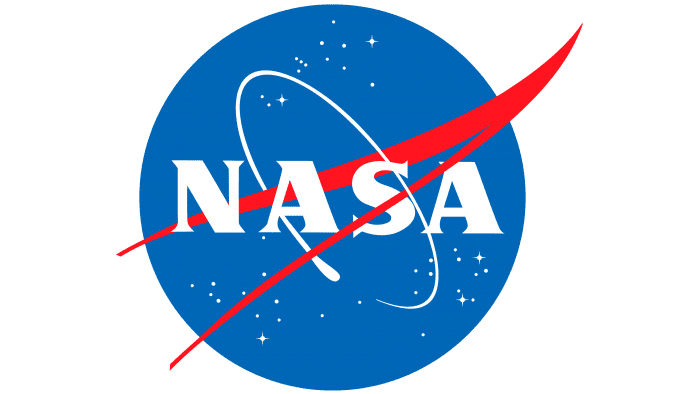 Nieuw-Vlaamse Alliantie Logo PNG
Nieuw-Vlaamse Alliantie Logo PNG
The Nieuw-Vlaamse Alliantie logo is confident and strong. It demonstrates the party’s unwavering position in defending the interests of Germanic tribes in Belgium. The symbols in the logo highlight the movement’s important role in the country’s political life.
Nieuw-Vlaamse Alliantie: Brand overview
N-VA, the New Flemish Alliance, came into existence on October 13, 2001, from the division of the Volksunie, a moderate Flemish nationalist party. This split arose from differing views on the future of the Flemish movement and the desired level of autonomy for Flanders. Geert Bourgeois, the party’s first chairman and a former member of the Volksunie, positioned the organization as a moderate force advocating for the gradual expansion of Flanders’ autonomy within Belgium.
In its initial years, the group faced challenges in gaining widespread support. The 2003 federal elections saw the party secure only one parliamentary seat, occupied by Geert Bourgeois. A significant turning point occurred in 2004 when Bart De Wever, a charismatic politician, assumed leadership. Under his guidance, the organization’s popularity rose, particularly among Flemish voters dissatisfied with traditional parties.
The 2004 regional elections marked a milestone as the group allied with the Christian Democratic and Flemish parties (CD&V). This partnership proved successful, securing several seats in the Flemish government. In the 2007 federal elections, the CD&V/N-VA alliance emerged as the largest political force in Flanders. However, the subsequent political crisis and inability to form a federal government led to the dissolution of the alliance in 2008.
Following the separation from CD&V, the party grew as an independent political entity. In the 2009 regional elections, the group garnered 13% of the vote in Flanders, becoming the region’s third-largest party. The 2010 federal elections marked a breakthrough, with the organization becoming the largest party in Belgium, securing 17.4% of the national vote and 27.8% in Flanders. This success stemmed from increasing dissatisfaction with Belgium’s complex federal system and economic issues.
Despite its electoral victory, the group did not join the federal government formed in 2011 after 541 days of negotiations. The party remained in opposition, consistently critiquing the Belgian state model and advocating for greater autonomy for Flanders. The 2012 local elections further solidified its position, making it the largest party in many Flemish cities, including Antwerp, where Bart De Wever became mayor.
The 2014 federal and regional elections brought further success for the group. The party won 32.4% of the vote in Flanders in the federal elections and joined the federal government led by French-speaking liberal Charles Michel. The group led the Flemish government. Within the federal government, the group held key portfolios, including interior affairs and finance, promoting conservative economic policies and a stringent stance on immigration.
In December 2018, the organization exited the federal government over disagreements regarding the UN Global Compact on Migration, causing the fall of Michel’s government and early elections in 2019. The 2019 elections saw the group remain the largest party in Flanders, though it experienced a slight decline in support compared to 2014. The party did not join the new federal government formed in 2020 and returned to opposition.
Meaning and History
What is Nieuw-Vlaamse Alliantie?
It is a political party in Belgium. Its activities focus on protecting Flemish interests and cultural identity. The party advocates for significant expansion of autonomy for Flanders and supports the idea of a confederal structure for Belgium. Its platform also includes economic liberalization, tax reforms, and stricter immigration policies. The party has considerable influence in Flemish politics and regularly participates in government coalitions.
2001 – today
The party’s history begins with the dissolution of Volksunie, the first political organization defending the interests of the Flemish people. Nieuw-Vlaamse Alliantie emerged as a continuation of this movement, striving to achieve the same goals with new strengths and ideas. The emblem symbolizes continuity and renewal, indicating the party’s readiness to fight for the rights and interests of the Flemish people in modern conditions.
The party’s logo consists of a large white abbreviation of its name, set against a black rectangle. The color contrast looks strict and classic, emphasizing the movement’s seriousness and the importance of the issues it raises. This portrays the party as a significant political opponent.
At the bottom, the abbreviation is explained in thin black letters on a white background. The movement’s name is linked to the legacy of the first alliance, Volksunie, which disbanded due to internal disagreements. Nieuw-Vlaamse Alliantie emerged as a new political force with the same goal as Volksunie.
The large and clear letters create a sense of strength and confidence. The sans-serif font underscores the party’s modern and straightforward approach to politics.
Black and white colors symbolize the clarity, precision, and logic of Nieuw-Vlaamse Alliantie’s demands and political program. An orange square at the top of the logo adds a bright accent, enlivening the emblem. This figure hints at the flag of Flanders, where the Flemish people live, whose interests the party defends.




